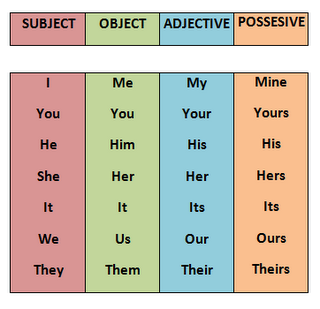Use of TOO, SO and VERY
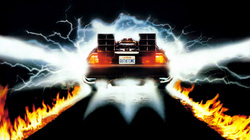
I highly recommend you watch this presentation and take notes on the future tenses. It will help you understand and use correctly the future simple (will + infinitive), be going to, future perfect (will have + past participle), future continuous (will be + ...ing), present simple and present continuous.
After, try these exercises:
Exercise 1
Exercise 2
Exercise 3
Exercise 4
After, try these exercises:
Exercise 1
Exercise 2
Exercise 3
Exercise 4
PHRASAL VERB PRACTICE
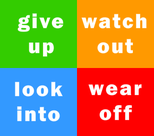
DO THESE EXERCISES LAST:
Grammar Review (Units 7, 8 and 9)

Modal verbs
Exercise 1
Exercise 2
Possessive pronouns and adjectives
Exercise 1
Exercise 2
Determiners and Quantifiers
Exercise 1
Exercise 2
Exercise 3
Present Perfect Simple
Exercise 1
Exercise 2
Irregular verbs
Quiz 1
Quiz 2
Quiz 3
Exercise 1
Exercise 2
Possessive pronouns and adjectives
Exercise 1
Exercise 2
Determiners and Quantifiers
Exercise 1
Exercise 2
Exercise 3
Present Perfect Simple
Exercise 1
Exercise 2
Irregular verbs
Quiz 1
Quiz 2
Quiz 3
Modal verbs
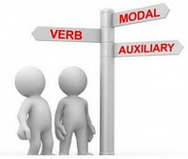
Exercise (can and can't)
Exercise (questions with can and can't)
Exercise (should and shouldn't)
Exercise (should and shouldn't)
Exercise (must and mustn't)
Exercise (must and mustn't)
Exercise (can, must and should)
Exercise (questions with can and can't)
Exercise (should and shouldn't)
Exercise (should and shouldn't)
Exercise (must and mustn't)
Exercise (must and mustn't)
Exercise (can, must and should)
Possessive Pronouns and Adjectives
Irregular verbs
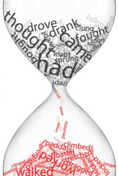
Determiners and Quantifiers
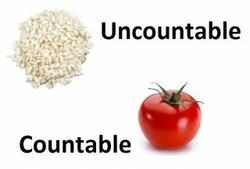
- a / an - singular countable nouns
a book, an apple - some - plural countable nouns, uncountable nouns (affirmative sentences)
There are some cats. There is some milk. - any - plural countable nouns, uncountable nouns (interrogative and negative sentences)
There aren't any tables. Is there any coffee? - a lot of - both countable and uncountable nouns
a lot of students, a lot of wood - many - plural countable nouns
many people - much - uncountable nouns
much homework - a few - plural countable nouns
a few children - a little - uncountable nouns
a little time
Present Perfect Simple
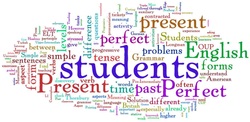
Lately we have practised in class a new tense - the Present Perfect Simple (have/has + past participle). Below you can find exercises to practice this tense.
Exercise 1 (forms of past participle)
Exercise 2 (have or has)
Exercise 3 (affirmative)
Exercise 4 (sentences with never)
Exercise 5 (questions)
Exercise 6 (mixed)
Exercise 1 (forms of past participle)
Exercise 2 (have or has)
Exercise 3 (affirmative)
Exercise 4 (sentences with never)
Exercise 5 (questions)
Exercise 6 (mixed)
Present Perfect Simple and Past Simple
Do you remember what the difference between these two tenses is?
Present Perfect Simple (have/has + past participle)
Past Simple (2nd column / -ed)
Exercise 1
Exercise 2
Exercise 3
Exercise 4
Exercise 5
Present Perfect Simple (have/has + past participle)
- Result of an action in the past is important in the present
- Actions beginning in the past and still continuing
- Signal words (time expressions): just, yet, never, already, ever, so far, recently, lately, since, for, ...
Past Simple (2nd column / -ed)
- Action finished in the past
- Signal words (time expressions): yesterday, last week, a week ago, in 2001
Exercise 1
Exercise 2
Exercise 3
Exercise 4
Exercise 5
ADJECTIVES
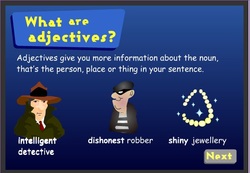
Learn what adjectives are and how to use them with the Adjective Detective. Click on the picture to get started.
Comparatives and Superlatives Game

Review the comparatives and superlatives with this game. Click on the image to start playing.
Comparatives and Superlatives
(not) as ... as
too / enough
More exercises on adjectives and adverbs
Comparatives 1 (easy)
Comparatives 2
Superlatives 1 (easy)
Superlatives 2
Comparatives and superlatives 1
Comparatives and superlatives 2
Adverbs
Adjective or Adverb
Too and enough
Comparatives 2
Superlatives 1 (easy)
Superlatives 2
Comparatives and superlatives 1
Comparatives and superlatives 2
Adverbs
Adjective or Adverb
Too and enough
First Conditional (IF + present simple, ... will + infinitive)
Talking about the future
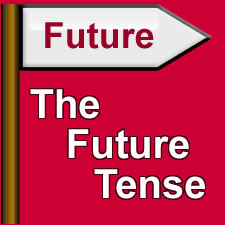
There are different ways of expressing future in English.
will
We use will to talk about plans decided at the moment of speaking (spontaneous decisions).
going to
We use going to to talk about plans decided before the moment of speaking.
present continuous
We can also use the present continuous to talk about future plans. We usually use it when the plan is an ‘arrangement’ – more than one person is involved and we know the time and place.
Have a look at this nice explanation, too.
Now you can check your understanding in the following exercises:
Exercises 1
Exercise 2
Exercise 3
Exercise 4
will
We use will to talk about plans decided at the moment of speaking (spontaneous decisions).
- I forgot to phone my mum. I’ll do it after dinner. He decides to phone his mum when she is speaking – she didn’t have a plan.
- I can’t decide what to wear tonight. I know. I’ll wear my black dress.
- There’s no milk in the fridge. I’ll buy some when I go to the shops.
going to
We use going to to talk about plans decided before the moment of speaking.
- I’m going to phone my mum after dinner. I told her I’d call at 8 o’clock. He decided to phone his mum before he speaks – he already had a plan.
- I’m going to wear my black dress tonight. I need to pick it up from the cleaners.
- I know there’s no milk. I’m going to get some. It’s on my shopping list.
present continuous
We can also use the present continuous to talk about future plans. We usually use it when the plan is an ‘arrangement’ – more than one person is involved and we know the time and place.
- I’m meeting Jane at 8 o’clock on Saturday.
- We’re having a party next Saturday. Would you like to come?
- Are you doing anything interesting this weekend? We often use the present continuous to ask about people’s future plans.
Have a look at this nice explanation, too.
Now you can check your understanding in the following exercises:
Exercises 1
Exercise 2
Exercise 3
Exercise 4
Irregular verbs
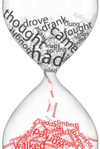
Past Continuous (Past Progressive)

Practice the forms and use of Past Continuous (was / were + ... ing) in the following exercises.
Exercise 1
Exercise 2
Exercise 3
Exercise 4
Exercise 1
Exercise 2
Exercise 3
Exercise 4
Past Simple and Past Continuous

Below you can find various exercises on the use of Past Simple (-ed or the second column of the irregular verbs) and Past Continuous/Progressive (was/were + ...ing).
Exercise 1
Exercise 2
Exercise 3
Exercise 4
Exercise 5
Exercise 6
The following video (which is in Spanish!) will help you understand the difference between these two tenses.
Exercise 1
Exercise 2
Exercise 3
Exercise 4
Exercise 5
Exercise 6
The following video (which is in Spanish!) will help you understand the difference between these two tenses.

